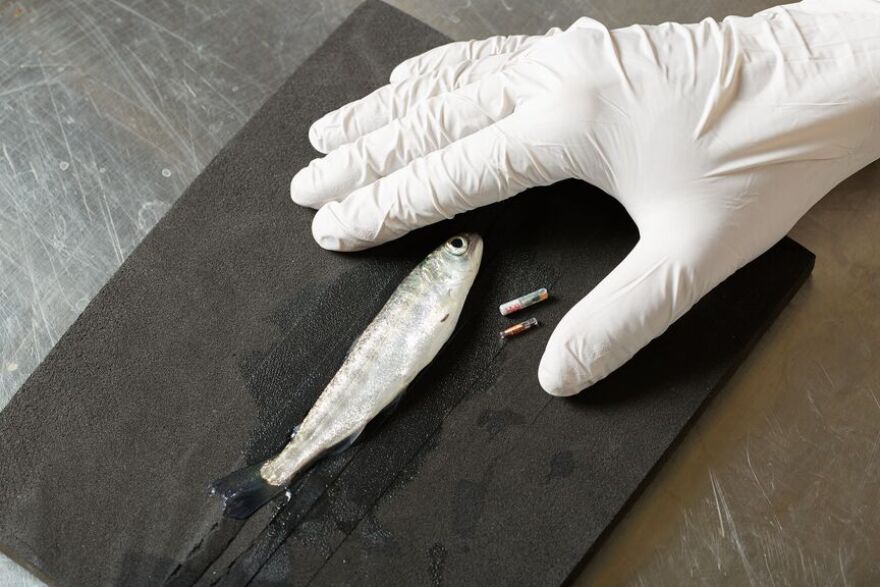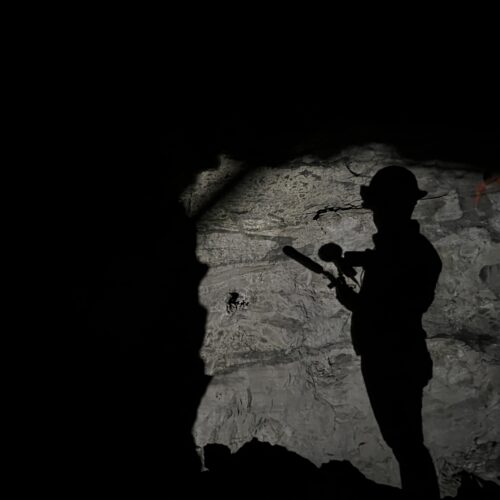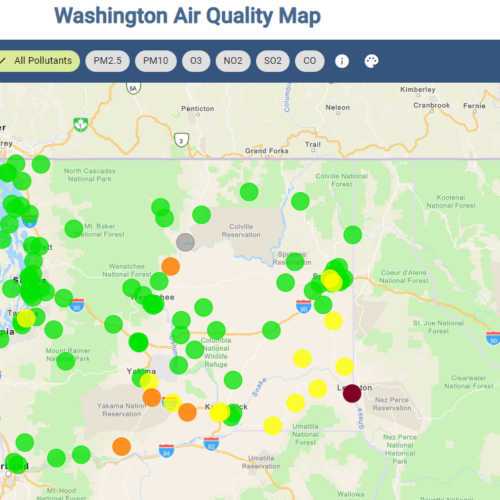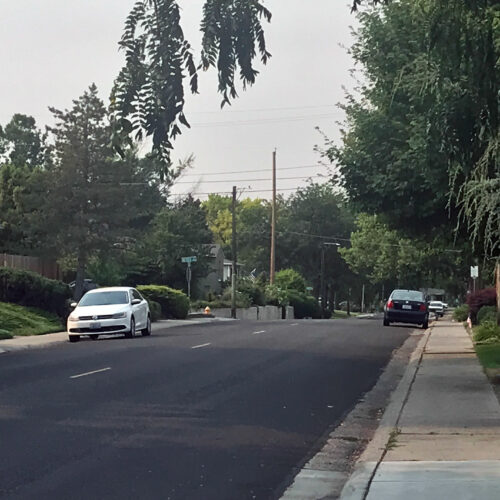
Newly Released Data Could Help Fish At Dams Around The World
Listen: Northwest News Network’s Courtney Flatt reports on data released that tracks fish and how they swim around dams / Runtime: 45 seconds
READ:
Tiny devices, smaller than a couple grains of rice, help provide reams of data researchers track salmon around Northwest dams.
Scientists hope this data from juvenile chinook salmon could help broaden the understanding of fish behavior in an inexpensive and effective way at other dams around the world, and therefore fish survival.
“We believe that this unique data set can be very useful to the scientific community for objectives beyond what we have done so far,” said Daniel Deng, a mechanical engineer at Pacific Northwest National Laboratory, who developed the tiny batteries for the tags.

The more than five million raw data points Pacific Northwest National Laboratory released gives other researchers a head start to study fish passage at dams, said Jayson Martinez, a mechanical engineer at the laboratory involved with the research.
“If somebody were to try and recreate this dataset on their own in order to test different hypotheses they might have. It would be very expensive and difficult to pull off,” Martinez said.
In the end, he said, the hope is that other researchers can take the data and go beyond the research in the Northwest.
A telemetry system, known as Juvenile Salmon Acoustic Telemetry System, helped collect the data on the tagged salmon.
Researchers implant tiny acoustic tracking devices in salmon.
The tiny tags help researchers track small fish without stressing them too much, said Alison Colotelo, who leads sustainable hydropower operations research at Pacific Northwest National Laboratory.
“We can do a really quick surgery, sometimes without even using sutures or anything to close up,” said Colotelo of implanting the tags.
In the water, the acoustic tag sends out a pinging signal every three-five seconds, she said.
“Each fish tag has a unique code, so it’s almost like your Social Security number,” Colotelo said. “We can see each individual fish as it’s moving down the river.”
The system helps monitor fish behavior as they approach the dams and continue to head downstream, she said.

In the Northwest, young fish have four main ways to get around dams: through a spillway, over a surface spill route, through the turbines, or through a juvenile fish passage system that routes fish around the dams.
As fish approach the dams, scientists collect information on where the fish are swimming, how long it takes them to pass the dam, which route they’re following, and if they survive, Colotelo said.
The studies have found 60-70% of the young salmon pass over the tops of dams through surface spills, Colotelo said.
“The fish typically survive really well through that route so they can kind of get through the dam and continue on their migration,” she said.
Next, Colotelo said, researchers plan to study the health of tagged fish, as well as their location.
Related Stories:

Intense fire week forces road closures and evacuation notices in WA
Fire crews continue firing wildfires to keep on high alert in the Northwest.

‘We’re just getting started’ | Haaland highlights major salmon recovery effort with $16M investment
U.S. Secretary of the Interior Deb Haaland celebrated with Gov. Jay Inslee, state, local, and Native American tribal leaders break ground at the new passage facility Wednesday, July 24, 2024

Boom Town: New Northwest-made podcast explores Western uranium mining and Hanford downwinders
Creator and host Alec Cowan’s shadow during a tour of the Sunday Mine Complex, a complex of five uranium mines in the Big Gypsum Valley near Paradox, Colorado, on Feb.












